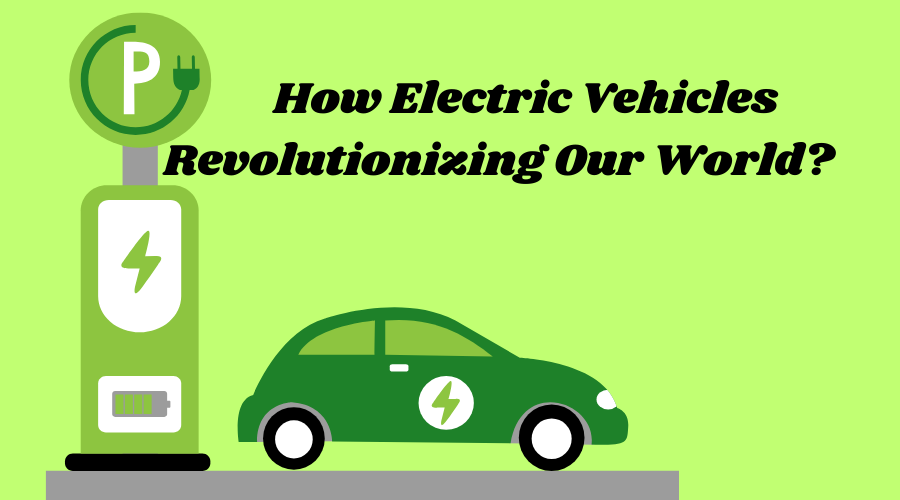
The world is quickly transforming into a digital form. Everything relies on electricity, and even the transportation modes are becoming electric. This is all about eliminating combustible engines for more options like electrical motors. Whether it is a car, bike, or truck, automobiles are becoming more sustainable. Even the environment benefits from them since pollution is involved in them. If you want to know more about them, here is all you can get.
Performance is what makes them different. They are also more advanced than gasoline and diesel vehicles in this way. There are multiple reasons behind this, some of which are below. Also, this shows that the economic impacts are inevitable since the fuel source is completely different. Unlike combustible engines, these Electric Vehicles have motors that run on electricity.
A combustible-engine vehicle has multiple gears, while an EV has only one gear for forward movement. This is one of the most significant differences between them. With a single-gear transmission, an EV can move faster from its initial speed to its highest level. Just because there is no multi-gear transmission, the torque is higher in EVs. This is why there will be futuristic transportation in our world.
Since combustible engines are not inside EVs, you will not hear the roaring sound of the engine. The motors installed inside them are much quieter than any other, so you will not find them making lots of noise on the road. Imagine if EVs replace traditional vehicles on the road. There would be less noise in traffic. Only the horns would be heard instead of the powerful engine's sound.
The best thing about that is that there will be less reliance on combustible fuel. This will drop massive demand worldwide, affecting the prices of the commodities. Since combustible fuel is extracted from petroleum, the global market is enormous. To cut down that demand, countries will have to switch to EVs. Then, the global reliance on petroleum will drop at a higher rate.
The pollution will then automatically be reduced because combustible engines release carbon at a high rate. This is why these traditional engines are not suitable for the environment. Traditional vehicles are not safe in terms of air quality or sound. However, EVs do not release high carbon, nor are they very loud. The environment will be clean at a good rate, and the noise level will be much lower.
Not only are their performance and designs different from traditional vehicles, but this factor also affects a country's economy. Because of newer technology, there will be more industries in the future.
There is no heavy engine in an EV so that you will find fewer components. Since there are fewer components, the vehicles will be of a lower weight. The bonnet will be mostly empty because an electric motor does not occupy much space. This significant difference makes EVs very lightweight, which also affects their speed. The performance level is better since fewer components make them less complicated. Another thing is maintaining the motor, battery, and other elements. There will be better and more durable batteries in the future, overcoming many challenges.
The best part about EVs is that they need electricity, and people can use solar-powered chargers. This will be an almost free-of-cost charging method. It will be a one-time investment in solar panels, chargers, and batteries. Then, you can replace these charging devices after a specific time, like a couple of years or five years, to keep the process going.
The economy will also flourish once electric vehicles enter the full-scale market. Different industries will benefit, like EVs, their parts, batteries, chargers, charging stations, and even solar panels. This will open gates of employment and international trade. It will bring growth to the world with better technology and sustainability.
However, EV users face some challenges. These challenges are being tackled with consistent R&D work in the industry. Some are even being overcome, and some are still underway.
EVs are not common yet, and they are even rare in some countries. The problem is that they might take more time to be fully available for consistent use. This is why there are also very few charging stations in most countries. Only a handful of countries have some charging points just because they have slightly better availability rates of EVs.
The biggest challenge is the price since it is still the latest technology in most countries. Only the developed countries have better prices because they are ready to adapt these EVs for a better future. The developing countries are still struggling to keep the prices affordable. High import costs are one of the challenges they have to face, which leads to higher prices for EVs.
Imagine you run out of battery power during your journey. That is the biggest fear of EV users. They do not want such risks, especially in states with few charging stations. These users have to carry special chargers to charge their EVs or rely on specific points where they can find charging stations. This creates range anxiety among their drivers, and there is no backup like traditional vehicles.
This industry is developing better batteries and motors, which will give EVs an advantage. Likewise, users will benefit because they will use them on the roads.